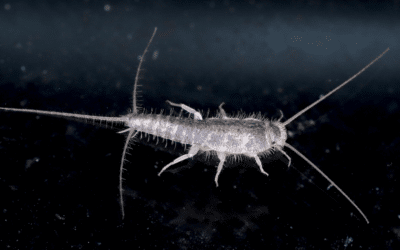If you’re like most people, the mere mention of cockroaches probably sends shivers down your spine. They are some of the most hated pests on the planet, and for a good reason—they can be incredibly nasty.
In this guide, we will discuss everything you need to know: what they eat, how to get rid of them, whether or not they bite, and more. We’ll also dispel some common myths about these icky insects. So if you’re ready to learn all about cockroaches, keep reading!
What do cockroaches eat?
The truth is that asking what roaches don’t eat will probably get you a shorter list than asking what they do eat. This is because roaches naturally are omnivorous and will eat various things, including food, paper, fabric, and even other roaches.
What attracts cockroaches?
Some of the most common food and water sources in your home that attract roaches are dirty dishes, pet food, garbage cans, and even cardboard boxes. Roaches love nesting in cardboard boxes, and hungry cockroaches will eat just about anything.
How do you prevent a roach infestation?
These opportunistic scavengers love when you don’t keep a clean house because there is an abundance of food lying about for them to eat. But eliminating roaches will take more than just keeping dirty dishes from piling up in the sink.
Taking out your garbage daily will prevent roaches from having a virtual buffet. Be sure to clean up spills immediately, as sticky remnants can be an appetizing meal.
Always store food in sealed containers. Only put pet food out when your animal is most likely to start eating. The key to cockroach control is ensuring they don’t have an abundance of food sources.
Like any other living thing, every cockroach species needs water. Standing water is an invitation to bugs of any kind and attracts roaches. Always fix leaky faucets and leaky pipes to prevent excess moisture in and around your home.
Of course, regular pest control service is an excellent way to prevent cockroaches.
Do cockroaches bite?
You may not want to think about it, but the answer is yes. They can bite humans. While it is not likely to happen, cockroaches have been seen biting fingernails, eyelashes, and calloused skin on hands or feet in reported incidents. They will also consume dead skin cells if they can find them.
While cockroach bites are incredibly uncommon, they do occur.
What kind of cockroach is likely to bite?
It is said that the German cockroach bites people, but again, only severe infestations have had reports of bites. Two additional species are believed to bite people: the American cockroach and the Australian cockroach.
Again, most reported bites occurred in the case of a severe cockroach infestation when food sources became extremely limited.
Despite these reports, the Center for Disease Control and Prevention says they do not generally bite humans. Instead, it’s more likely that humans would be harmed by their scratchy legs and the germs they carry.
Are cockroaches dangerous?
According to the Environmental Protection Agency, they can carry bacteria on their legs, such as salmonella, streptococcus, and staphylococcus. Since roaches can have these bacteria on their legs, it’s possible for them to contaminate food and surfaces just by walking on them, but also by leaving their feces and saliva.
The World Health Organization blames the bugs for outbreaks causing intestinal diseases like dysentery, typhoid, and cholera. This alone is enough reason to get rid of roaches in your home.
However, the most likely scenario posing a danger to humans is allergies. People prone to asthma attacks may experience more severe impacts. The cause of the allergy is related to enzymes found in roach droppings, shed skins, and dead roaches.
In some cases, cockroaches have been known to start fires. For example, they seek out dark, warm spaces to nest in and can often be found near electrical outlets. A fire could start if dead roaches or skins are left inside these outlets while they’re hot.
What are some common myths about roaches?
There are many myths about these insects, but these three are some of the most common:
- Roaches can survive without their heads.
- All roaches can fly.
- Roaches can survive a nuclear explosion.
The first myth is that they can survive without their heads. Unfortunately, this is true. Roaches can live up to a week without their heads, but they will eventually die from lack of food and water.
The second myth is that all roaches have wings and can fly. While many species have wings, not all fly. The German cockroach does not, despite having wings. American cockroaches use their wings to glide short distances, while other roaches do indeed take flight.
The third myth is that they are invincible and can survive a nuclear explosion. While roaches would likely survive fallout for longer than humans, radiation is capable of killing roaches.
Now that you know the truth, it’s time to protect your home.
How do you get rid of cockroaches?
There are many different ways to get rid of cockroaches, including cockroach baits, traps, and insecticides. The most effective way to get rid of roaches depends on the severity of the infestation and the type involved. German cockroaches and American cockroaches are harder than some other species to eliminate. But no matter what, preventative pest control is roach control.
For more information on how to get rid of roaches, please schedule a free inspection with 855Bugs today.




